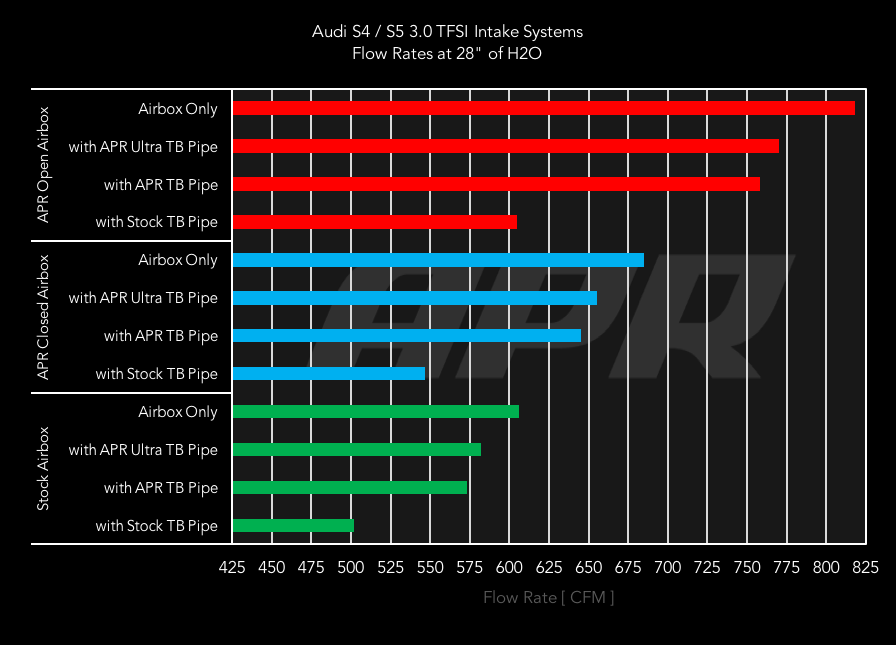
Originally Posted by
JJI

Isnt what your describing pretty much what the APR ultra charger does ?
Sent from my iPhone using Tapatalk
Thanks, but my question is different. I appreciate your intent. I was purposefully limiting my question to a search for CFM flow on the stock throttle body only, under standard 28" water column testing protocol. I'm looking for the actual bench flow number in CFM at standard pressure.
That number will inform intake air filter flow, air box design, and throttle body tube size and design for those of us using the stock throttle body for whatever the reason may be.
My inquiry is really directed to the underlying issue of the trend toward larger, sometime gigantic multi-pleated cone air filters in aftermarket kits. The more pleats and more surface area you have for the same type of filter element, should produce a higher flow. But, at some point, if the flow capability of the filter is greater than the ability of the throttle body to pass more air, then that "extra" filter flow is purely a marketing ploy and produces no gain.
Knowing the flow rate of the throttle body seems to be an important factor in consumer education and in product selection. If we have the stock throttle body (perhaps because we are still in warranty or for other reasons) it makes no sense to pay extra for a filter that has a higher flow rate than the throttle body can pass through to the supercharger.
Example: Let us assume the throttle body can pass 600 CFM (I don't know what the number is) using the standard pressure protocol. Let us assume that the supercharger can handle that flow and the intake tract and intake valve size will do so and that you can match fuel demand and optimize AFR.
If the filter and throttle body tube can pass only 500 CFM using that protocol, then the system will benefit from a higher flowing filter.
But, if the filter and/or throttle body tube can flow 1,000 CFM and the upstream system beginning with the throttle body, is restricted to 600 CFM of flow, then you would be wasting money by paying extra for the big filter and tube.
Example 2: You can connect a soda straw to a vacuum source and gradually increase vacuum, sucking through that straw. You will reach a point where the flow through the straw cannot increase. The throttle body corresponds to the soda straw. The supercharger is the vacuum source pulling air through the throttle body.
That's what I am looking for regarding the throttle body -- its standard protocol CFM flow rate.
One exception might be use in a high dirt/dust/sand environment. Then, a very dirty filter capable of 1,000 CFM might still flow 600 CFM. That might be important in specialized conditions, like off road rally racing or desert racing or such. Probably not relevant to 99% of us.
Surly, someone has actually bench flowed the stock throttle body. I'm sure the aftermarket intake manufacturers have, but they are likely to be close-lipped about this.













 Reply With Quote
Reply With Quote





Bookmarks